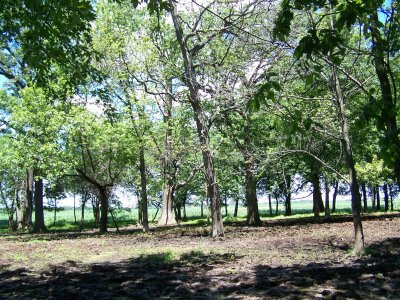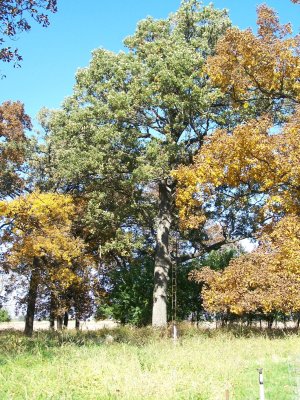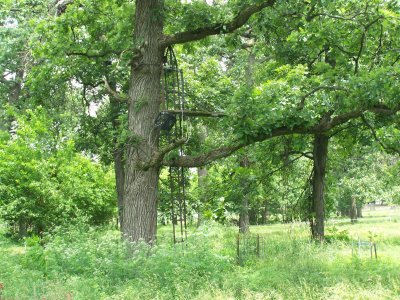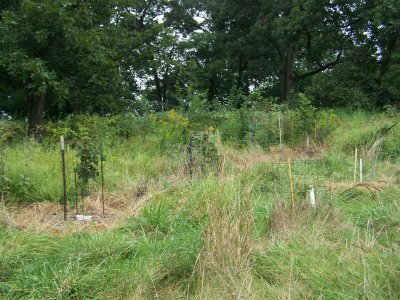Wind Gypsy
5 year old buck +
You'd think just letting it go without cattle would allow things to take off? Don Higgins always talks about how old cattle pasture makes the best bedding once the cattle are gone and things can grow up.
You'd think just letting it go without cattle would allow things to take off? Don Higgins always talks about how old cattle pasture makes the best bedding once the cattle are gone and things can grow up.
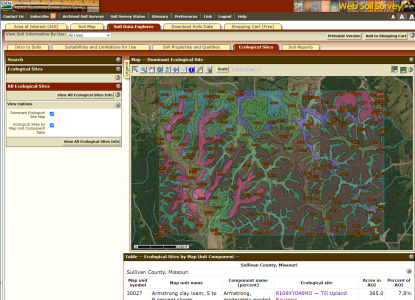


Thanks my friend! My passion is these savanna’sWell said... very well said!
I’ve had the exact opposite effect with fire. It causes thick, tall growth that deer absolutely love. I’m not talking about burning it yearly, that’s what makes a low grass dominant topography. 4 to 5 year burn intervals and that stuff will be so thick the bucks will love it.I don't know what your goal is for the property, but if the goal is to have the best deer hunting possible, I would recommend making changes. I've hunted a number of farms in SE MN that have similar looking woods and they are cool looking places that are great for turkeys and squirrels, but not for deer. They are too open to be a preferred bedding place and they are so open that it is almost impossible to slip in or out without every deer on the property knowing you are there.
I would not recommend burning the woods unless you want it to continue to look like that. Burning it will kill off all of the young shrubs and many tree seedlings that you need if you want this place to hold more deer. There's a big park about a mile from my house that tries to maintain an oak savannah similar to what you have. They cut all of the young trees and shrubs, then they burn it every few years to look just like your pictures. It filled in with some native grasses, but they are thin and offer very little cover.
I'd definitely leave the cedars since they are the best deer holding cover on the place. If your goal is to increase the deer holding ability the fastest, have it logged and cut half the trees and leave the tops where they fall. You will immediately have ground cover and great bedding and those tops will act like tree cages that will allow the next generation of oaks and other trees to grow without being browsed.
You can never have too much native browse. 30 to 50% canopy cover with fire and you will have up to 3000 pounds of forage per acre. That’s right up there with the best food plots. And it’s basically free.Yeah, after checking out these links and seeing some other comments, this would definitely not be considered a savannah.
On this farm as a whole, we are hoping to increase cover and food to hold more deer, and to a lesser extent turkey. I wouldn't mind preserving small parts of these wooded areas, or transitioning some to a true oak savannah, though. We could harvest some of the oaks for a little bit of income and transition some areas to the oak savannah, and encourage more regeneration in other areas. I think the idea of the savannah is nice from a diversity standpoint, especially considering this property is the only one around with this type of habitat.
I think from a carrying capacity standpoint, we want to have more year round cover and food for deer on the ground. We are going to have something like 60 acres of native grasses from the pastures you can see through the trees in the background, so having more native grasses in what woody cover we do have seems a little redundant?
Here is a link to the property tour thread with some overhead shots of these areas: https://habitat-talk.com/threads/new-blank-canvas-farm-tour-in-northern-mo.15444/
Sorry, I get excited about this stuff. In my experience, big bucks are killed in the trees. If you keep these areas with enough cover for the Deer to safe, but thin enough, you can see them to shoot them, they will walk all through these woods, grazing checking out the native grass areas.Yeah, after checking out these links and seeing some other comments, this would definitely not be considered a savannah.
On this farm as a whole, we are hoping to increase cover and food to hold more deer, and to a lesser extent turkey. I wouldn't mind preserving small parts of these wooded areas, or transitioning some to a true oak savannah, though. We could harvest some of the oaks for a little bit of income and transition some areas to the oak savannah, and encourage more regeneration in other areas. I think the idea of the savannah is nice from a diversity standpoint, especially considering this property is the only one around with this type of habitat.
I think from a carrying capacity standpoint, we want to have more year round cover and food for deer on the ground. We are going to have something like 60 acres of native grasses from the pastures you can see through the trees in the background, so having more native grasses in what woody cover we do have seems a little redundant?
Here is a link to the property tour thread with some overhead shots of these areas: https://habitat-talk.com/threads/new-blank-canvas-farm-tour-in-northern-mo.15444/
What part of the country are you from? I have no doubt that deer in different areas are drawn to different habitat.I’ve had the exact opposite effect with fire. It causes thick, tall growth that deer absolutely love. I’m not talking about burning it yearly, that’s what makes a low grass dominant topography. 4 to 5 year burn intervals and that stuff will be so thick the bucks will love it.
I think we have different ideas of oak Savannah. They are very very very different than large open pasture.What part of the country are you from? I have no doubt that deer in different areas are drawn to different habitat.
I’ve never hunted Missouri, but that habitat looks very similar to southeast minnesota.
My current place was partially pastured when we bought it and half was similar to that. Hunting in the pastured area was inconsistent since it was similar to my neighbors pasture and the deer tended to bed in the unpastured thick creekbottom. I removed the cattle and let my place grow thick and added some food plots. My place held dramatically more deer after it became thicker with shrubs and seedlings and the food plots helped give me a more consistent bed to food routine.
My neighbor with the large open pasture asked to hunt my place since the deer weren’t using his place as much as before since they were now bedding on mine. The deer preferred the thickest cover they can find here, which was the shrub filled woods.
I do think those oak savannahs are really cool though and I can see why people like them.
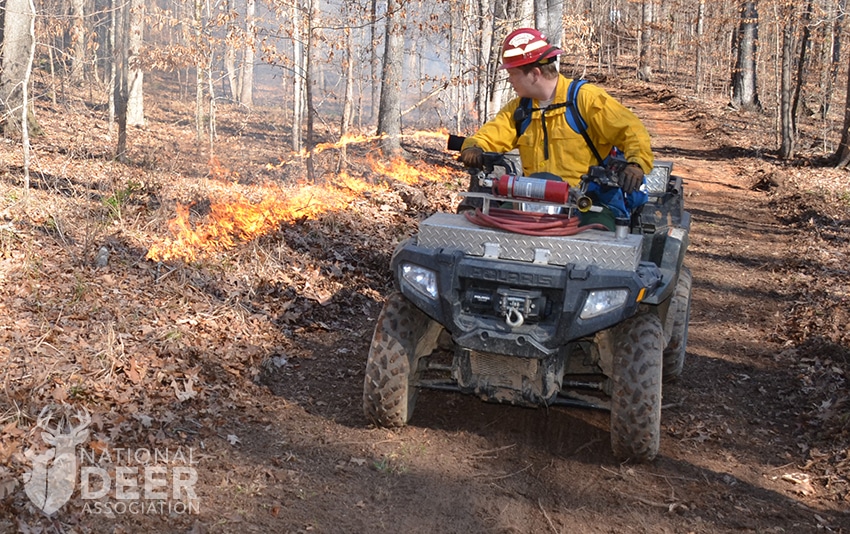

 www.aces.edu
www.aces.edu
Ya I could use about 5 acres of those trees, I have a nice spot just waiting... But up on one of my ridges there is pocket of white oaks that look like that, I love sitting up in those treesSure wish I could transplant that oak flat to my place! I’d burn it this spring and see how it responds now that the cows are gone. You might eventually need to remove some trees to get it to your desired thickness.
Sent from my iPhone using Tapatalk
